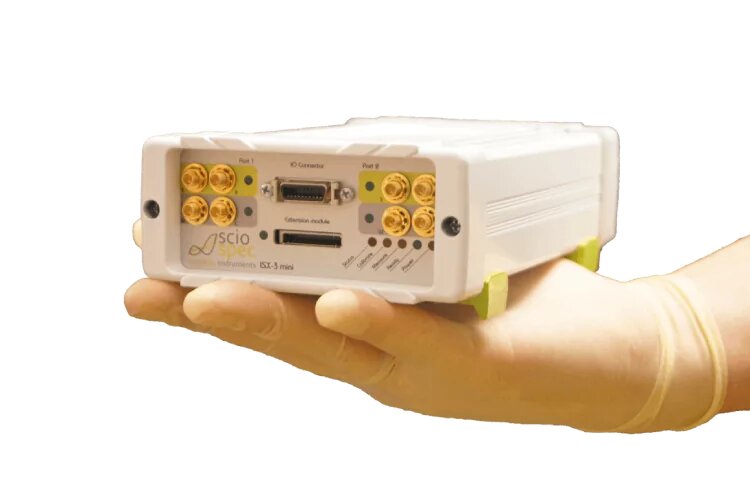As technology advances and electronic components become more sophisticated, the design and functionality of LCR (Inductance, Capacitance, Resistance) meters are evolving to meet the demands of modern research, development, and manufacturing. Future trends in LCR meter design are driven by the need for greater accuracy, broader frequency coverage, increased automation, and adaptability to emerging technologies. This article explores the anticipated trends that will shape the future of LCR meter design and functionality.
1. Higher Frequency Coverage:
- Anticipation:
- LCR meters will likely feature even higher frequency ranges.
- Rationale:
- As electronic circuits and components operate at increasingly higher frequencies, LCR meters need to keep pace to accurately characterize and test these components. The demand for millimeter-wave and terahertz applications may drive LCR meters towards extended frequency capabilities.
2. Advanced Impedance Analysis:
- Anticipation:
- Increased focus on advanced impedance analysis and modeling.
- Rationale:
- The growing complexity of electronic systems demands a deeper understanding of impedance characteristics. Future LCR meters may offer more sophisticated algorithms and modeling capabilities to accurately represent complex impedance behaviors, especially in advanced circuits and materials.
3. Multi-Parameter Characterization:
- Anticipation:
- LCR meters capable of simultaneous measurement of multiple parameters.
- Rationale:
- To enhance efficiency and streamline testing processes, future LCR meters may incorporate multi-channel capabilities, allowing researchers and engineers to measure inductance, capacitance, and resistance simultaneously on different channels.
4. Integration with Artificial Intelligence (AI):
- Anticipation:
- Integration of AI for data analysis and pattern recognition.
- Rationale:
- AI technologies can assist in identifying patterns, anomalies, and trends in measurement data. Future LCR meters may leverage AI algorithms to enhance the accuracy and speed of analysis, providing more meaningful insights for researchers and engineers.
5. Enhanced Connectivity and IoT Integration:
- Anticipation:
- LCR meters with improved connectivity options and IoT integration.
- Rationale:
- Seamless data sharing, remote control, and integration with IoT platforms will likely become standard features. This facilitates real-time monitoring, data analysis, and collaboration in distributed research and manufacturing environments.
6. Automated Calibration and Self-Diagnostics:
- Anticipation:
- Increased automation in calibration procedures and enhanced self-diagnostic capabilities.
- Rationale:
- Automation can reduce human error and improve the overall reliability of measurements. Future LCR meters may include advanced algorithms for automatic calibration and self-diagnostics, ensuring accurate and consistent performance over time.
7. Compact and Portable Designs:
- Anticipation:
- Continued emphasis on compact, portable, and handheld designs.
- Rationale:
- The demand for on-the-go testing and field applications may drive the development of LCR meters with smaller form factors. Portable designs enable greater flexibility and convenience in various testing environments.
8. Wide Temperature Range Testing:
- Anticipation:
- LCR meters with extended temperature range testing capabilities.
- Rationale:
- As electronic components are utilized in diverse environments, LCR meters may be designed to operate and provide accurate measurements across a wider temperature range. This is especially important for applications in extreme conditions.
9. Integration with Augmented Reality (AR):
- Anticipation:
- Integration of AR for real-time visualization and guidance during testing.
- Rationale:
- AR can enhance user experience by providing visual overlays, instructions, and data visualization in real-time. Future LCR meters may leverage AR technology to improve user interaction and efficiency.
10. Green and Sustainable Design:
- Anticipation:
- Increased focus on environmentally friendly and energy-efficient designs.
- Rationale:
- Future LCR meters may incorporate eco-friendly materials, energy-efficient components, and sustainable manufacturing practices to align with global efforts towards environmental sustainability.
In conclusion, the future trends in LCR meter design and functionality are shaped by the evolving landscape of electronic components and testing requirements. Anticipated advancements in higher frequency coverage, advanced analysis techniques, connectivity, and integration with emerging technologies reflect the ongoing commitment to meeting the demands of cutting-edge research, development, and manufacturing. As technology continues to progress, LCR meters will play a pivotal role in shaping the future of electronic testing and characterization.










